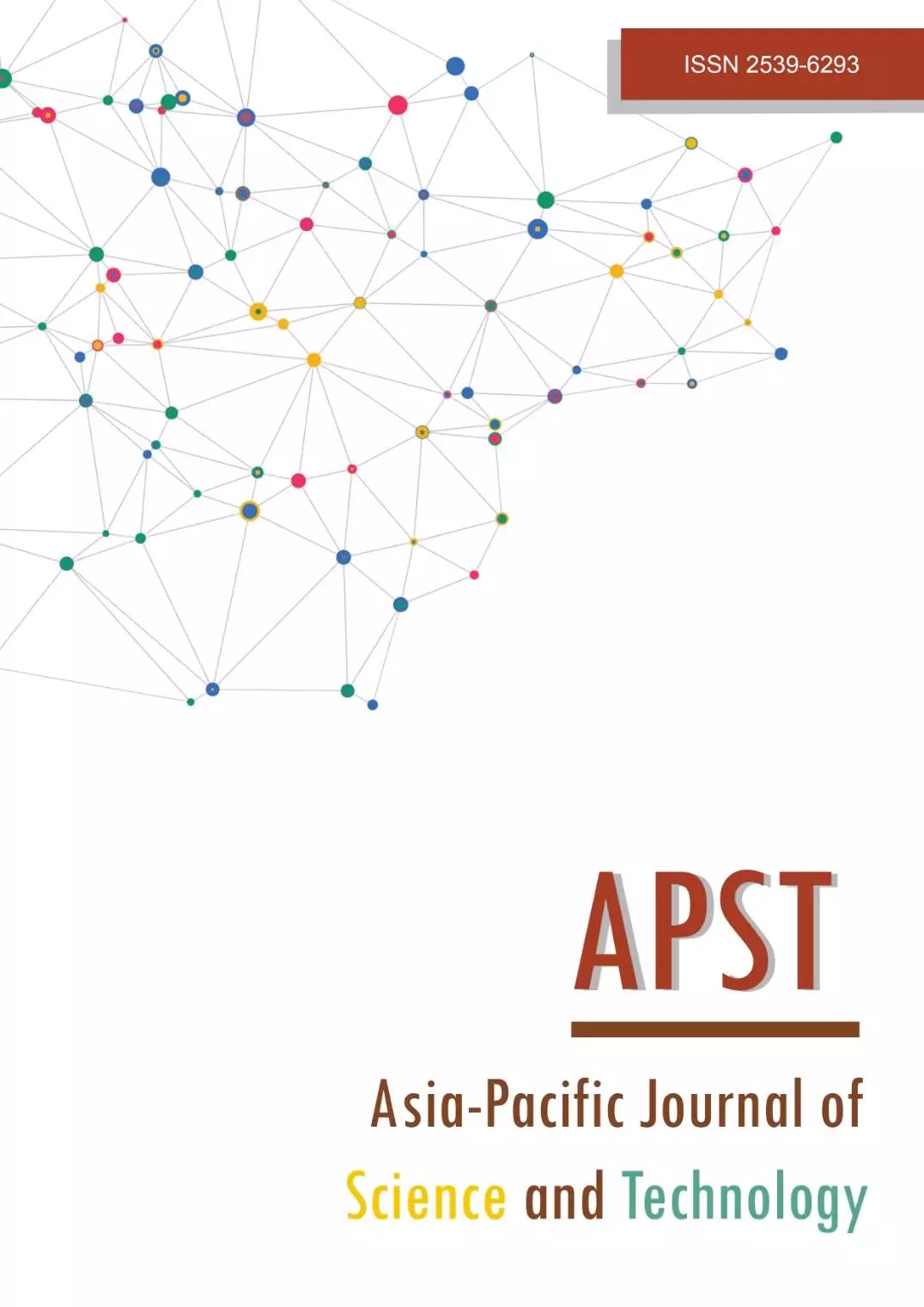Finite element analysis of CFRP-reinforced automotive hood under impact
Main Article Content
Abstract
This study aimed to explore the crashworthiness characteristics of carbon fiber reinforced plastics (CFRP) composite materials, based on the strength and energy absorption capacity. The specimen was an automotive hood which was tested numerically by using impact tests and finite element modeling simulation. The carbon fiber was reinforced by plastics with different orientations including [0/90]2, [0/90]3, [0/90]4, [45/-45]2, [45/-45]3, and [45/-45]4 which were tested under impact using drop hammer tower testing machine. The results revealed that the maximum load occurred with the [0/90]4 carbon fiber layers. With the [0/90]4 and [45/-45]4 carbon fiber layers, the specimens showed an increase in the mean load. In terms of energy absorption, findings revealed that [45/-45]4 specimen had higher value when the numbers of fibers were increased, whereby the absorbed energy was 1.13 kNm. The results from the impact test were relevant to the results of the finite element modeling simulation which could confirm the results of the impact tests.
Article Details

This work is licensed under a Creative Commons Attribution-NonCommercial-NoDerivatives 4.0 International License.
References
Bajpai P. Chapter 8 - applications of carbon fiber/carbon fiber-reinforced plastic/recycled carbon fiber-reinforced polymers. Car Fiber. 2021:139-155.
Haithem BHF, Leger R, Perrin D, Ienny P, Gerard P, Devaux JF. Recovery and reuse of carbon fibre and acrylic resin from thermoplastic composites used in marine application. Resour Conserv Recycl. 2021;173:105705.
Fernández A, Muro MS, Blázquez FJP, Lopes CS, Aldareguia MJM. Processing and properties of long recycled-carbon-fibre reinforced polypropylene. Compos Part B Eng. 2021;211:108653.
Muda MKH, Mustapha F. Composite patch repair using natural fiber for aerospace applications, sustainable composites for aerospace applications. Sus Compos Aer Appl. 2018;1:171-209.
Wanga F, Zhang Z, Ning F, Wanga G, Dong C. A mechanistic model for tensile property of continuous carbon fiber reinforced plastic composites built by fused filament fabrication. Addit Manuf. 2020;32:101102.
Ghosh T, Kim HC, Kleine RD, Wallington TJ, Bakshi BR. Life cycle energy and greenhouse gas emissions implications of using carbonfiber reinforced polymers in automotive components: front subframe case study. SM&T. 2021;28:e00263.
Das S, Graziano D, Upadhyayula VK, Masanet E, Riddle M, Cresko J. Vehicle light weighting energy use impacts in US light-duty vehicle fleet Sustain. Mater Technol. 2016;8:5-13.
Barnett PR, Hulett BM, Penumadu D. Crashworthiness of recycled carbon fiber composites. Compos Struct. 2021;272:114232.
Wei A, Tan MY, Koay YC, Hu X, Ameri R. Effect of carbon fiber waste on steel corrosion of reinforced concrete structures exposed to the marine environment. J Clean Prod. 2021;316:128356.
Absi C, Alsinani N, Lebel LL. Carbon fiber reinforced poly(ether ether ketone) rivets for fastening composite structures. Compos Struct. 2022;280:114877.
Soutis C. Carbon fiber reinforced plastics in aircraft construction. Mater Sci Eng. 2005;412(1-2):171-176.
Chowdhury NM, Chiu WK, Wang J, Chang P. Experimental and finite element studies of bolted, bonded and hybrid step lap joints of thick carbon fibre/epoxy panels used in aircraft structures. Compos Part B Eng. 2016;100:68-77.
Torkestani A, Sadighi M, Hedayati R. Effect of material type, stacking sequence and impact location on the pedestrian head injury in collisions. Thin-Walled Struct. 2015;97:130-139.
Ahmed A, Wei L. Introducing CFRP as an alternative material for engine hood to achieve better pedestrian safety using finite element modeling. Thin-Walled Struct. 2016;99:97-108.
Kim DH, Jung KH, Kim DJ, Park SH, Kim DH, Lim JY, et al. Improving pedestrian safety via the optimization of composite hood structures for automobiles based on the equivalent static load method. Compos Struct. 2017;176:780-789.
Huang S, Yang J. Optimization of a reversible hood for protecting a pedestrian’s head during car collisions. Accid Anal Prev. 2010;42:1136-1143.
Mamalis D, Floreani C, Brádaigh CMO. Influence of hygrothermal ageing on the mechanical properties of unidirectional carbon fibre reinforced powder epoxy composites. Compos Part B Eng. 2021;225:109281.
Ueda M, Tasaki Y, Kawamura C, Nishida K, Honda M, Hattoric K, et al. Estimation of axial compressive strength of unidirectional carbon fiber reinforced plastic considering local fiber kinking. Compos Part C Open Access. 2021;6:100180.
Junchuan V, Thinvongpituk C. The Influence of fiber orientation and stacking sequence on the crush behavior of hybrid AL/GFRP tubes under axial impact. Mater Trans. 2020;61(7):1322-1331.
ASTM International [Internet]. Pennsylvania: The Organization; c1996-2023 [cited 2021 Dec 14]. ASTM D3039/D3039 M-17: standard test method for tensile properties of polymer matrix composite materials. Available from: https://www.astm.org/d3039_d3039m-17.html.
Deck C, Willinger R. Improved head injury criteria based on head FE model. Int J Crashworthiness. 2008;13(6):667-678.
Sellitto A, Riccio A, Magno G, Errico G, Monsurro G, Cozzolino A. Feasibility study on the redesign of a metallic carhood by using composite materials. Int J Automot Technol. 2020;21(2):471-479.
Acanfora V, Saputo S, Russo A, Riccio A. A feasibility study on additive manufactured hybrid metal/composite shock absorbers. Compos Struct. 2021;268:113958.


